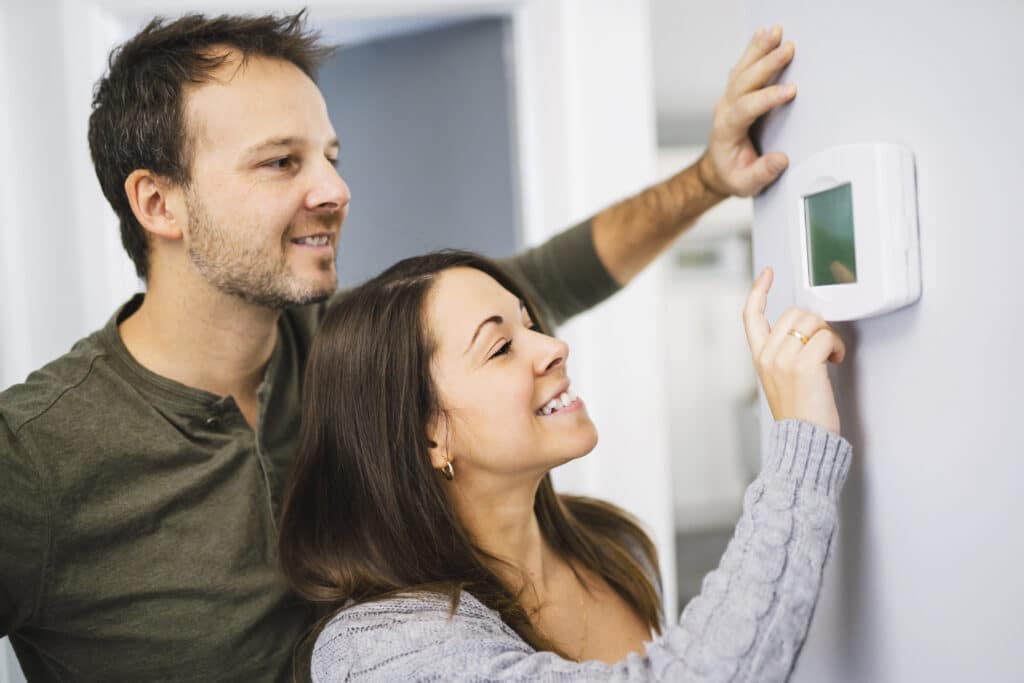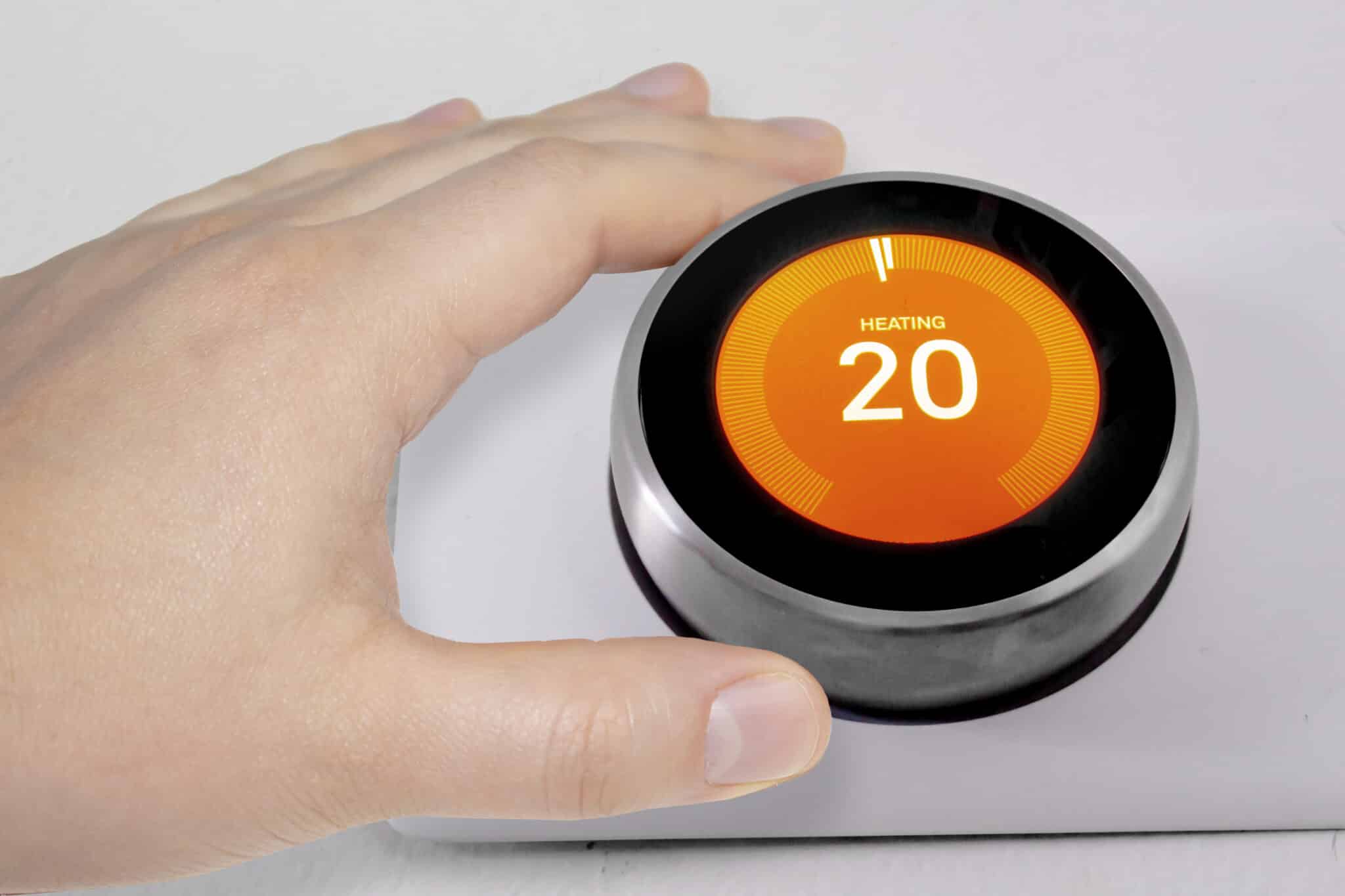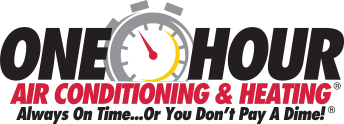
How to Save on Energy Costs
Energy costs often spike in October as temperatures drop, making heating systems work harder. By improving energy efficiency, you can lower your bills and reduce environmental impact. Simple actions like sealing drafts, optimizing thermostat settings, and regular HVAC maintenance can save money and help protect the environment, making your home more comfortable during cooler months.
Conduct an Energy Audit for Your Home
Conducting an energy audit for your home is one of the most effective ways to uncover hidden sources of energy waste and reduce your utility bills. An energy audit is a thorough examination of your home’s energy use, identifying areas where your home is losing energy and suggesting cost-effective improvements. This process evaluates everything from insulation and air leaks to heating and cooling systems, lighting, and appliances, providing a clear picture of how energy flows through your home.
There are two main types of energy audits: DIY and professional. A DIY energy audit is a great starting point for homeowners who want to take immediate action. You can begin by inspecting windows and doors for drafts, checking insulation levels, and examining the efficiency of your heating and cooling systems. Simple fixes like sealing gaps, installing weather stripping, and replacing old light bulbs with LED versions can significantly reduce energy consumption.
However, for a comprehensive assessment, a professional energy audit is recommended. Professional auditors use specialized tools like blower doors and infrared cameras to pinpoint areas of energy loss that are often missed in a DIY audit. They provide detailed reports with prioritized recommendations, helping you make informed decisions about upgrades that will deliver the most savings. The investment in a professional audit pays off quickly, as targeted improvements can lead to substantial reductions in energy costs.
Taking the time to conduct an energy audit empowers you to take control of your home’s efficiency, saving you money while making your home more comfortable and environmentally friendly.
Upgrade to Energy-Efficient Appliances
Upgrading to energy-efficient appliances is one of the smartest investments you can make to reduce your energy bills and enhance your home’s overall efficiency. Energy-efficient appliances are designed to use less electricity, water, and natural gas without sacrificing performance. These appliances often come with advanced features like improved insulation, precision temperature controls, and smart sensors that optimize their operation, resulting in significant energy savings over time.
The most impactful upgrades include major appliances such as HVAC systems, refrigerators, and washing machines. An energy-efficient HVAC system, for instance, uses advanced technology to regulate temperatures more effectively, reducing energy consumption during peak heating and cooling seasons.
Upgrading an old refrigerator to an Energy Star-rated model can cut energy use by up to 15%, saving you hundreds of dollars over the appliance’s lifetime. Similarly, high-efficiency washing machines use up to 40% less water and 25% less energy than conventional models, providing both immediate and long-term savings.
Beyond cost savings, energy-efficient appliances contribute to environmental sustainability by reducing your household’s carbon footprint. Less energy consumption means lower greenhouse gas emissions, which helps combat climate change. Additionally, many of these appliances qualify for rebates and tax incentives, further offsetting the initial investment. While the upfront cost of upgrading can be a consideration, the long-term savings on utility bills and the added value to your home make energy-efficient appliances a worthwhile investment.
By making these upgrades, you not only improve your household budget but also contribute to a more sustainable future.
Optimize Your Heating and Cooling Systems
Optimizing your heating and cooling systems is essential for reducing energy costs and ensuring your home stays comfortable year-round, especially in places like Coppell, TX, where temperatures can vary significantly. Your HVAC system is one of the largest energy consumers in your home, so maintaining it properly can lead to substantial savings and improved efficiency.
One of the simplest yet most effective ways to boost your HVAC system’s performance is by changing the air filters regularly. Dirty filters restrict airflow, forcing your system to work harder and use more energy. Replacing filters every one to three months helps maintain optimal airflow and keeps your system running efficiently. Additionally, setting your thermostat to energy-saving temperatures, like 68°F in the winter and 78°F in the summer, can further reduce energy use without sacrificing comfort.
Professional HVAC maintenance is also crucial for optimizing system performance. Scheduling regular tune-ups with experts, like One Hour Air Conditioning & Heating of Dallas, ensures that your system is operating at peak efficiency.
Professional technicians inspect and clean critical components, identify potential issues before they become costly repairs, and make adjustments to enhance performance. This proactive approach not only extends the lifespan of your HVAC system but also maximizes energy efficiency, helping you save on utility bills.
In Coppell, TX, where seasonal changes can be unpredictable, a well-maintained HVAC system is your first line of defense against high energy costs.
Investing in professional maintenance services from trusted providers like One Hour Air Conditioning & Heating of Dallas ensures that your system runs smoothly, providing reliable comfort and efficiency year-round.
Seal and Insulate Your Home Properly
Sealing and insulating your home properly is one of the most effective ways to reduce energy costs and maintain a comfortable indoor environment. Air leaks around windows, doors, and attics allow heated or cooled air to escape, forcing your HVAC system to work harder and consume more energy. By sealing these leaks, you can prevent heat loss in winter and keep cool air inside during summer, resulting in significant savings on your energy bills.
Identifying and sealing leaks is a straightforward yet powerful step. Use weather stripping and caulk around windows and doors to close gaps that allow drafts to enter your home. Don’t overlook attics, which are common culprits for air leaks. Attic hatches, plumbing vents, and electrical wiring holes can all be sealed with foam or caulking materials to prevent air from escaping. These small, inexpensive fixes can greatly improve your home’s overall energy efficiency.
Proper insulation is equally important in maintaining your home’s temperature. Insulation acts as a barrier, slowing the transfer of heat and keeping your home warm in the winter and cool in the summer. Adding or upgrading insulation in key areas, such as attics, walls, and floors, helps stabilize indoor temperatures and reduces the workload on your heating and cooling systems. This not only lowers energy costs but also increases comfort, making your home a more pleasant place to live.
Investing in sealing and insulating your home is a cost-effective strategy with immediate and long-term benefits. By addressing air leaks and enhancing insulation, you can achieve a more energy-efficient home, reduce your utility bills, and contribute to a greener environment.

Smart Thermostats: A Smart Investment
Smart thermostats are a strategic way to reduce energy costs and improve your home’s efficiency. These advanced devices use technology to learn your daily routines and adjust temperatures automatically, minimizing unnecessary energy use. By operating your heating and cooling systems only when needed, smart thermostats significantly cut down on energy costs without compromising comfort.
Smart thermostats analyze your patterns, like when you leave for work or go to sleep, and make temperature adjustments accordingly. This automation helps lower energy costs by reducing the workload on your HVAC system during periods when heating or cooling isn’t essential. For instance, it can set your home to be more energy-efficient during the day and comfortable just before you return.
Remote access via smartphone apps adds even more control, allowing you to adjust settings from anywhere. Forgot to turn down the heat? No problem—simply change it on the go. Smart thermostats also offer energy usage reports that help you see where your energy costs are going, providing valuable insights to fine-tune your savings even further.
Investing in a smart thermostat not only slashes energy costs by up to 10% annually but also enhances your home’s overall comfort and convenience. This upgrade is an excellent way to manage your utility expenses while contributing to a more sustainable and eco-friendly lifestyle, making it a truly smart investment.
Maximize Natural Light and Heat
Maximizing natural light and heat in your home is an excellent strategy to reduce heating needs during the cooler months, leading to lower energy costs. By using sunlight effectively, you can keep your home warmer and rely less on your heating system, enhancing energy efficiency and comfort.
Start by keeping your curtains and blinds open during the day, particularly on south-facing windows that capture the most sunlight. This allows warmth to naturally enter your home, reducing the need to increase your thermostat. Clean windows are also crucial; even a thin layer of dirt can block sunlight, diminishing the warming effect that helps cut down on energy costs.
In the evening, close your curtains and blinds to retain the heat collected during the day. Opt for heavy or thermal curtains to provide additional insulation and prevent heat loss through windows. This simple step helps maintain indoor warmth without straining your heating system, lowering your overall energy consumption.
Rearranging furniture to avoid obstructing sunlight can further boost natural heat flow. Placing seating areas or workspaces near windows allows you to enjoy a sunlit and warmer environment. By adjusting how you use natural light, you can significantly reduce energy costs, improve the efficiency of your home, and create a bright, cozy atmosphere during the colder seasons.
Adjust Your Water Heating Settings
Adjusting your water heating settings is a simple yet effective way to reduce energy costs and improve overall home efficiency.
Water heaters are one of the biggest energy consumers in a household, accounting for about 18% of your utility bills. By making a few adjustments to your water heater settings, you can save money without sacrificing comfort.
One of the easiest ways to cut down on energy costs is by lowering the thermostat on your water heater. Many water heaters are set to 140°F by default, but reducing the temperature to 120°F can significantly lower your energy consumption. This small change not only reduces the amount of energy needed to heat your water but also decreases the risk of scalding, making it a safer option for households with children or elderly members.
Insulating your water heater and pipes is another crucial step in boosting efficiency. An uninsulated water heater loses heat rapidly, forcing it to work harder to maintain the desired temperature. Wrapping your water heater in an insulating blanket can reduce heat loss by up to 45%, cutting standby heat losses by up to 16%. Insulating the hot water pipes minimizes heat loss as the water travels, ensuring it stays warm and reducing the time you wait for hot water.
By adjusting the thermostat settings and insulating your water heating system, you can achieve significant savings on energy costs. These changes not only improve efficiency but also prolong the lifespan of your water heater, making it a smart and sustainable investment for your home.
Seasonal Maintenance Tips for October
As October sets in, it’s an ideal time to get your home ready for the colder months with essential maintenance tips that can help keep your heating system running efficiently. Seasonal maintenance not only ensures comfort during chilly weather but also plays a significant role in reducing energy costs by optimizing your HVAC system’s performance before winter arrives.
Start by inspecting and replacing HVAC filters. Clogged filters restrict airflow, making your system work harder and driving up energy costs. Clean or replace filters every one to three months to maintain optimal airflow and enhance indoor air quality, which becomes especially important during the colder months when homes are sealed tight.
Scheduling a professional HVAC check-up is equally important. A seasonal tune-up from One Hour Air Conditioning & Heating of Dallas prepares your system for the challenges of winter. Experienced technicians will perform a thorough inspection, clean essential components, check the thermostat, and test the system to ensure it’s running at peak efficiency. Addressing potential issues early prevents unexpected breakdowns and extends the life of your heating equipment.
Additionally, take time to inspect your windows and doors for drafts. Gaps around these areas can cause significant heat loss, leading to increased heating costs. Applying weather stripping or caulking helps seal these gaps, keeping warm air inside and reducing the strain on your heating system.
By following these seasonal maintenance tips in October, you can enhance your home’s comfort, reduce energy costs, and ensure that your heating system is fully prepared to handle the winter ahead.
Contact One Hour Air Conditioning & Heating of Dallas today to schedule your seasonal HVAC check-up and keep your home warm all winter long.
Conclusion
Lowering energy costs is about making smart choices that enhance your home’s efficiency and comfort.
Simple actions like conducting energy audits, sealing leaks, upgrading to energy-efficient appliances, and using smart thermostats can significantly reduce your bills.
Proper maintenance, especially during seasonal transitions like October, ensures your heating system operates optimally when temperatures drop.
Investing in energy-saving measures not only cuts costs but also contributes to a more sustainable lifestyle by reducing your carbon footprint.
Don’t wait for high energy costs to make changes—start with small adjustments that offer immediate and long-term benefits. Partnering with professionals like One Hour Air Conditioning & Heating of Dallas for maintenance and expert guidance can help keep your home running efficiently.
Take control of your energy costs today and enjoy a more comfortable, cost-effective, and eco-friendly home. Contact us to schedule your service and start saving.

Frequently Asked Questions (FAQ)
-
What are the best ways to save on energy costs?
To save on energy costs, prioritize home efficiency improvements such as conducting energy audits, sealing leaks, and upgrading to energy-efficient appliances. Regular HVAC maintenance, installing smart thermostats, and maximizing natural light for heating are also effective strategies to lower your expenses.
-
How often should I conduct an energy audit?
Conduct an energy audit every two to three years or if you notice a sudden increase in energy costs. Regular audits identify inefficiencies, such as poor insulation or outdated systems, helping to ensure your home remains energy-efficient and comfortable while managing energy costs effectively.
-
Are energy-efficient appliances worth the investment?
Energy-efficient appliances are worth the investment as they significantly lower energy costs by consuming less power. Upgrading to appliances like Energy Star-rated models can cut utility bills by up to 30%, offering long-term savings that justify the initial cost.
-
How can I tell if my home is properly insulated?
Signs of inadequate insulation include drafts, uneven room temperatures, and high energy costs. A professional energy audit can assess your home’s insulation levels, identifying areas for improvement that can help reduce energy costs and enhance comfort by maintaining consistent indoor temperatures.
-
What are the benefits of using a smart thermostat?
Smart thermostats reduce energy costs by learning your schedule and automatically adjusting temperatures to optimize heating and cooling efficiency. They can lower your heating and cooling expenses by up to 10%, making them a valuable tool for enhancing energy efficiency and home comfort.







